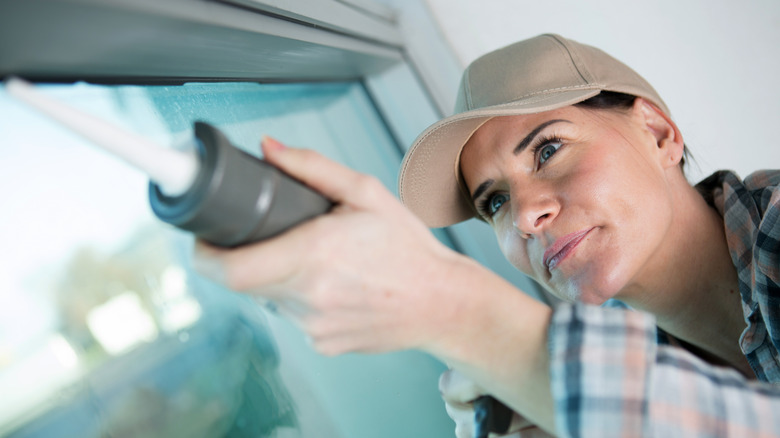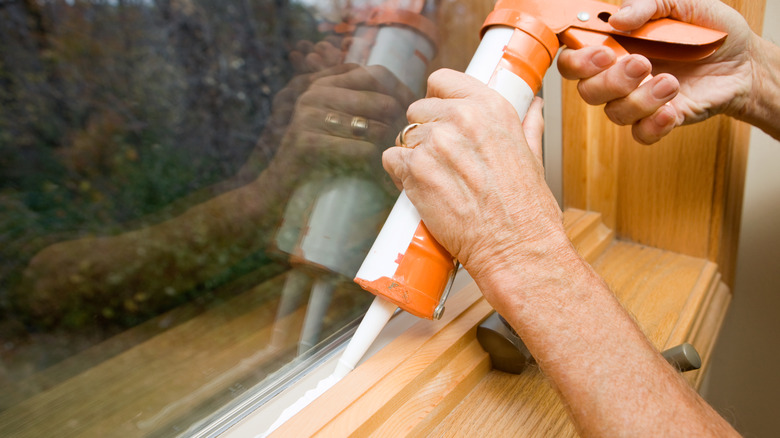What To Know Before Caulking Your Window
Caulking is a process where you use a sealant — often referred to as caulk — to seal off gaps and cracks around your window frames. This is typically done as part of home maintenance and weatherproofing. When you caulk your windows, you're working to reduce drafts, prevent water damage, and improve your home's energy efficiency by preventing heat loss. Before you embark on the task of caulking your windows, it's crucial to understand the distinctions among the various types of caulk — each type is specifically formulated for particular uses.
When dealing with exterior windows, a siliconized latex caulk is commonly recommended. This caulk combines silicon with latex — it is durable and weather resistant, designed to endure mildew. As it's also paintable, it can blend in well with the outside of your home. In contrast, pure silicone caulk provides superior flexibility and adherence, making it an excellent choice for sealing gaps and cracks that may expand and contract due to temperature fluctuations or building shifts. However, silicone caulk isn't paintable, so you should keep this in mind if color matching is important to you.
For interior windows, a simple, paintable latex caulk usually suffices. It's easy to apply, dries quickly, and can be painted to match your interior trim or wall color. While it doesn't offer the same level of weather resistance as siliconized or pure silicone caulk, it emits fewer fumes and is perfectly adequate for indoor applications where exposure to weather isn't an issue.
What you should do when caulking your windows
When applying caulk, start by cleaning the area around the window — dirt prevents the caulk from sticking. When running a bead of caulk, use both hands to improve your control over the application process. One hand guides the caulk gun and applies pressure to the trigger, dispensing the caulk. The other hand is free to guide the tip of the gun along the surface being caulked, helping to keep the bead straight and even.
Your guiding hand can also adjust the angle and direction of the caulk gun, ensuring the caulk is getting into the gap and not just spreading on the surface. Using both hands can also help you move along the surface at a steady, consistent speed, assisting you in managing your movement and applying a nice, even bead of caulk. In essence, by using both hands, you increase your control and precision, which can lead to a more professional-looking result and a more effective seal.
Applying caulk can be challenging and requires a steady hand to create a clean, even line. To make things easier, try to keep a uniform bead by stopping halfway. If you're having trouble running a smooth bead, try taping off your seams with painter's tape. Creating straight, precise lines is important — otherwise the caulk will look messy and uneven and fail to close the gap effectively.
What you should not do when caulking your windows
Avoid applying fresh caulk on top of old caulk. The new caulk likely won't adhere to the old because it doesn't create a firm or clean surface — especially if the old caulk is loose, flaking, or peeling. Second, the old caulk may be contaminated with dirt or other substances that prevent the new caulk from adhering. With this in mind, it's best to remove old caulk.
Although trimming the caulk tube's tip is necessary for the caulk to flow out, you should take care not to cut the tip too much. A thicker bead of caulk will emerge when applied if the tip is trimmed too low, creating a big opening. This will use up the caulk more quickly than necessary and also make the caulk more difficult to control — which can lead to untidy application. To apply a thinner, more controlled caulk bead and ensure a neater, more accurate application, make a smaller hole further up the tip.
While caulk is versatile and useful for sealing small gaps and cracks, it should not be used as a filler for large gaps, such as those you might find in poorly trimmed-out windows. Caulk is not designed to fill large gaps — most can effectively fill a gap up to about ¼-inch wide, but beyond that, they might not cure properly. A thick bead of caulk will dry on the surface but remain soft underneath, creating a messy, unprofessional appearance.


